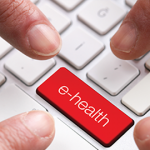It is no surprise that understanding health information and navigating the U.S. health system can overwhelm even the savviest patients with advanced literacy skills. Data from the National Adult Literacy Survey suggest that nearly 50% of all adults have problems understanding many aspects of healthcare, including prescriptions, appointment slips, and health education materials.
The Patient Protection and Affordable Care Act (PPACA), passed in 2010, places an increased focus on health literacy as a means of engaging patients in their care and improving health outcomes. According to the PPACA, there are three main areas where patient engagement requires improvement: patient compliance, disease management and prevention, and shared decision making. In order to improve each of these areas, the patient must be able to comprehend what their physician is communicating to them, recall the information, and know what is expected of them after leaving the office.
Although it is not the sole answer to the health literacy problem, health information technology (IT) is viewed as an enabler of patient engagement, making clear and actionable health information, instructions, and educational resources accessible to patients, and doing so in an automated and targeted way. Using core electronic health record (EHR) system functionalities—such as results management, health information and data that support granular reporting and population health management, order entry and management, disease registries, decision support, and electronic communication for patient support—can strengthen and automate the process for patient engagement. Utilization of health IT can help fight constraints such as restricted time with the patient, limited comprehension, logistical problems, and cultural barriers to patient education and engagement.
For this reason, use of health IT in the physician’s office to support patient engagement has been a key focus of national health and quality improvement initiatives like the Centers for Medicare and Medicaid Services (CMS) Electronic Health Records Incentive Program.
Patient Engagement Through Meaningful Use of the EHR System
A key goal for the inclusion of patient engagement objectives as part of the CMS EHR Incentive Program is to ensure that the functionality of the EHR and its supporting systems is being fully used by providers to support patients in their health and care.
Among the 35 objectives and measures providers must meet in order to become a “meaningful user” of health IT—making them eligible for up to $64,000 in bonus payment from the CMS EHR Incentive Program—are a series of objectives focused on using the EHR system to facilitate patient engagement and foster an environment that includes the patient as a partner in healthcare decision making through the delivery of salient and timely messaging, support for self management, social support, and the delivery of content aimed towards personal demographics such as age, race, gender, ethnicity, cultural background, and primary language.
The objectives for eligible providers (EPs), which are most relevant for patient engagement and the promotion of health literacy, include:
Providing Clinical Summaries at Each Visit
Measure: Clinical summaries provided to patients within three business days for more than 50% of all office visits.
While the measure sets the threshold of 50% of all patients, CMS states that a clinical summary should be provided at all office visits. Research suggests that immediately after a visit, patients forget somewhere between 40% and 80% of the medical information they receive, and of the information remembered, about half is remembered incorrectly. Providing a written after-visit summary with key health information, a summary of issues discussed at the visit, and instructions for self-care and follow-up in combination with the verbal information delivered during the visit can have a greater impact on a patient’s understanding of their disease state and instruction for care than verbal information alone.
Note that the summary can be delivered by paper or electronic means (e.g., patient portal or secure e-mail).
Sending Patient Reminders for Preventative/Follow-up Care
Measure: More than 20% of all unique patients 65 years or older or five years old or younger were sent an appropriate reminder during the EHR reporting period, per patient preference.
It is important to note that the patient reminders referred to in this objective are not simply appointment confirmations sent to the patient as a reminder for an already-scheduled appointment. This objective focuses on sending patients in specific age groups reminders that alert patients to recommended tests, preventative services, or other care. To be most effective, these alerts should be relevant, targeted to unique patients, and based on the medical condition, age, gender, and/or other factors related to clinical guidelines (See Table 1). Using the EHR to query your patient data and identify those who need to respond to care recommendations is key for automating this process. Once the alert or reminder has been conveyed to the patient, then your practice can schedule the patient for an appointment, as appropriate.
These reminders can be sent via mail or through electronic means such as patient portal, secure e-mail, or even text message, if appropriate. The rule states that reminders should be sent “per patient preference,” which refers to the identification of a patient’s preferred means of communication and not inquiries as to whether a patient would like to receive service reminders.
Table 1: What’s Included in the After-visit Summary?
CMS states that, at a minimum, the after-visit summary should include the following:
- The patient name;
- Provider’s office contact information;
- Date and location of visit;
- An updated medication list and summary of current medications;
- Updated vitals;
- Reason(s) for the visit;
- Procedures and other instructions based on clinical discussions that took place during the office visit;
- Any updates to a problem list;
- Immunizations or medications administered during the visit;
- Summary of topics covered/considered during the visit;
- Time and location of next appointment/testing if scheduled or a recommended appointment time if not scheduled;
- List of other appointments and testing the patient needs to schedule, with contact information;
- Recommended patient decision aids;
- Laboratory and other diagnostic test orders;
- Test/laboratory results (if received before 24 hours after the visit); and
- Symptoms.
These elements are included as part of EHR certification and the capabilities are included in certified EHR technology. However, rheumatology providers are encouraged to work with their EHR vendors in order to make capabilities as relevant to their individual practices as possible.
Providing EHR-Enabled Patient-Specific Educational Resources
Measure: More than 10% of all unique patients seen by the EP are provided patient specific education resources.
Using the data stored in your EHR system, it is not only easy to access patient educational resources on demand, but also possible to automate the process to ensure that all patients receive relevant resources to better understand their health and care. Keep in mind that automation does not necessarily mean that a “one-size-fits-all” approach is appropriate. Using structured data, such as patient demographics, can help you to understand and produce resources based on the patient’s primary language and give you the ability to understand the patient’s health information as well as cultural background. Using supporting functionality, like a patient portal or personal health record, can also support multiple media types, allowing for the delivery of patient education and provider instructions through audio or video.
This objective does not specify what has to be delivered or the method of delivery. The rule uses the phrasing “if appropriate,” which allows the provider to decide whether the educational resource identified by the certified EHR technology is useful and relevant to a specific patient, and whether or not to provide the educational resources to the patient.
Providing Timely Electronic Copies of the Record
Measure: More than 50% of all patients of the EP who request an electronic copy of their health information are provided it within three business days.
Producing copies of the record electronically ensures patients have access to their health information in a structured and legible format. It is important for your practice to address internal processes to ensure that you are extending patients’ prompt and secure access to records in a way that includes a reasonable delivery and approval process.
Providing Timely Online Access to Personal Health Data
Measure: More than 10% of all unique patients seen by the EP are provided timely (available to the patient within four business days of being updated in the certified EHR technology) electronic access to their health information, subject to the EP’s discretion to withhold certain information.
Unlike the previous measure, which focuses on a single export of the health record—which is only as current as the date it was produced—this measure requires that the patient be given on-demand access to their up-to-date health care information (e.g., through a patient portal). There may be situations where a provider may decide that electronic access of a portal or personal health record is not the best forum to communicate results. This objective does allow providers to withhold some information until the next visit based on their clinical judgment.
By proactively sharing visit summaries and educational resources, sending actionable reminders, and opening real-time access to a patient’s health record, providers are taking a step toward constructing a transparent healthcare process in which the patient can take an active role in each encounter, as well as manage their health and care on an ongoing basis, according to the provider’s recommendations.
CMS considers patient engagement as a key component of the Meaningful Use Program and the ACR expects to see more objectives and higher thresholds for the measures in Stages 2 and 3 of the program. Pursuit of meaningful use requires the practice to carefully consider their strategy for patient communication and access to information—a strategy that goes beyond the installation of health IT.
Don’t expect your patients to spontaneously adopt these systems because you make a portal or personal health record system available. If you want to motivate your patients to meaningfully use patient-centered health IT and the information generated by these systems, consider addressing patient engagement initiatives head-on as part of the practice’s overall strategic plan or operational goals. You may even want to get patients involved in designing these initiatives!
Effective patient engagement will require a multidimensional approach, with focus on delivering health information through the right delivery mechanisms, at the right time in the care process, and in the proper context to motivate and sustain care-plan compliance and lifestyle modifications.
More than Just Meaningful Use
The promotion of patient engagement through meaningful use is just one small piece of the national movement to encourage health literacy and promote changes in the health delivery system that seek to make the patient a partner in their care through improved access to health information, effective and efficient communication methods, and informed and shared decision-making.
Organizations including the Agency for Healthcare Research and Quality, National Institutes of Health, National Library of Medicine, Robert Wood Johnson Foundation, and many others are all actively working to support the national health literacy movement through efforts to make health information accessible, understandable, and actionable. They are partnering with others to solve challenges and identify opportunities related to patient engagement. Through these research efforts, new technology and tools are being designed to engage and address patients in a way that delivers recommendations and resources based on their unique capabilities, needs, and ability to understand health information.
While practices alone cannot close the information gap by simply meeting Stage 1 Meaningful Use objectives, they can begin to maximize the opportunity to communicate care information using technology as an outreach tool.
If you have questions about the CMS EHR Incentive Program or how you can use technology to engage patients and promote health literacy, visit www.rheumatology.org/hit or e-mail the ACR Quality and Health Informatics staff at [email protected].

